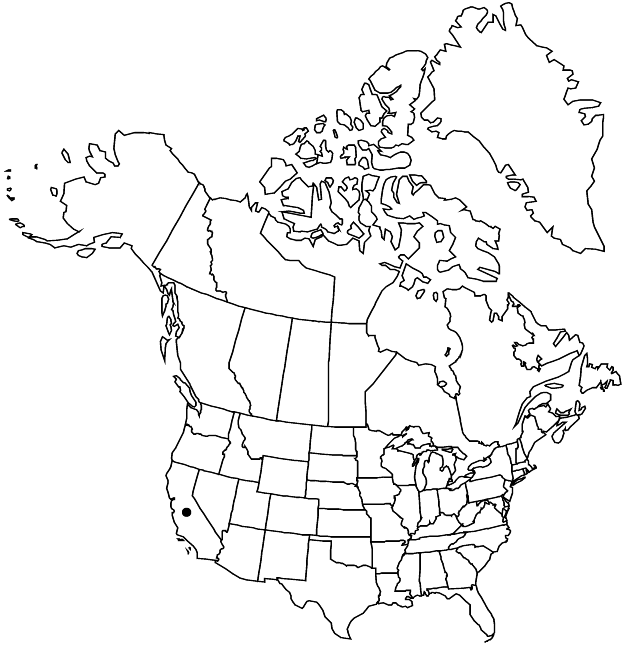Difference between revisions of "Eriogonum cithariforme"
Proc. Amer. Acad. Arts 23: 266. 1888.
FNA>Volume Importer |
FNA>Volume Importer |
||
| Line 11: | Line 11: | ||
|name=Eriogonum gracile var. cithariforme | |name=Eriogonum gracile var. cithariforme | ||
|authority=(S. Watson) Munz | |authority=(S. Watson) Munz | ||
| − | }}{{Treatment/ID/Synonym | + | }} {{Treatment/ID/Synonym |
|name=Eriogonum vimineum var. cithariforme | |name=Eriogonum vimineum var. cithariforme | ||
|authority=(S. Watson) S. Stokes | |authority=(S. Watson) S. Stokes | ||
| Line 27: | Line 27: | ||
|distribution=Calif. | |distribution=Calif. | ||
|discussion=<p>Varieties 2 (2 in the flora).</p><!-- | |discussion=<p>Varieties 2 (2 in the flora).</p><!-- | ||
| − | --><p>The graceful, upwardly curved branch segments of Eriogonum cithariforme generally are distinctive in older plants, although an occasional individual of E. davidsonii may have this feature. A distinction between E. cithariforme and E. roseum also is troublesome, as in young material the curved branch segments are not always obvious.</p> | + | --><p>The graceful, upwardly curved branch segments of <i>Eriogonum cithariforme</i> generally are distinctive in older plants, although an occasional individual of <i>E. davidsonii</i> may have this feature. A distinction between <i>E. cithariforme</i> and <i>E. roseum</i> also is troublesome, as in young material the curved branch segments are not always obvious.</p> |
|tables= | |tables= | ||
|references= | |references= | ||
| Line 62: | Line 62: | ||
|publication year=1888 | |publication year=1888 | ||
|special status= | |special status= | ||
| − | |source xml=https://jpend@bitbucket.org/aafc-mbb/fna-data-curation.git/src/ | + | |source xml=https://jpend@bitbucket.org/aafc-mbb/fna-data-curation.git/src/8f726806613d60c220dc4493de13607dd3150896/coarse_grained_fna_xml/V5/V5_882.xml |
|subfamily=Polygonaceae subfam. Eriogonoideae | |subfamily=Polygonaceae subfam. Eriogonoideae | ||
|genus=Eriogonum | |genus=Eriogonum | ||
Revision as of 17:41, 18 September 2019
Herbs, spreading to erect, 2–3(–5) dm, glabrous or tomentose, greenish or reddish. Stems: aerial flowering stems erect, 0.5–1 dm, glabrous or tomentose. Leaves basal and sometimes cauline; basal: petiole 1–5 cm, tomentose to floccose, often slightly winged, blade oblanceolate or elliptic to ovate or nearly rounded, 1–2 × 0.5–1.5(–2) cm, tomentose abaxially, floccose to glabrate and grayish to greenish adaxially; cauline: petiole 0.5–2 cm, floccose, blade elliptic, 0.3–1 cm × 0.2–0.7 cm, similar to basal blade. Inflorescences cymose, distally uniparous due to suppression of secondary branches, open, 5–25 × 5–25 cm; branches usually inwardly curved, glabrous or tomentose; bracts 0.5–2.5 × 0.5–2 mm. Peduncles absent. Involucres somewhat appressed to branches, turbinate, 2.5–3 × 1.5–2 mm, glabrous; teeth 5, erect, 0.2–0.4 mm. Flowers 1.5–2 mm; perianth white to rose, glabrous; tepals monomorphic, oblong-obovate; stamens included, 1–1.5 mm; filaments pilose proximally. Achenes brown, 3-gonous, 1–1.5 mm.
Discussion
Varieties 2 (2 in the flora).
The graceful, upwardly curved branch segments of Eriogonum cithariforme generally are distinctive in older plants, although an occasional individual of E. davidsonii may have this feature. A distinction between E. cithariforme and E. roseum also is troublesome, as in young material the curved branch segments are not always obvious.
Selected References
None.
Key
| 1 | Flowering stems and inflorescence branches tomentose | Eriogonum cithariforme var. cithariforme |
| 1 | Flowering stems and inflorescence branches glabrous | Eriogonum cithariforme var. agninum |
